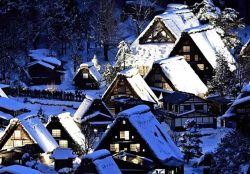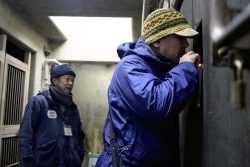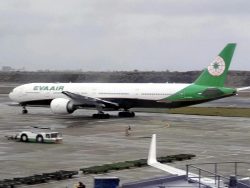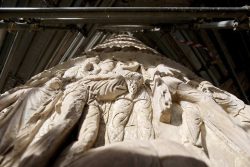View of Mt. Fuji Utilized to Revitalize Abandoning Shopping Street in Yamanashi Pref.; While Preserving Retro Atmosphere
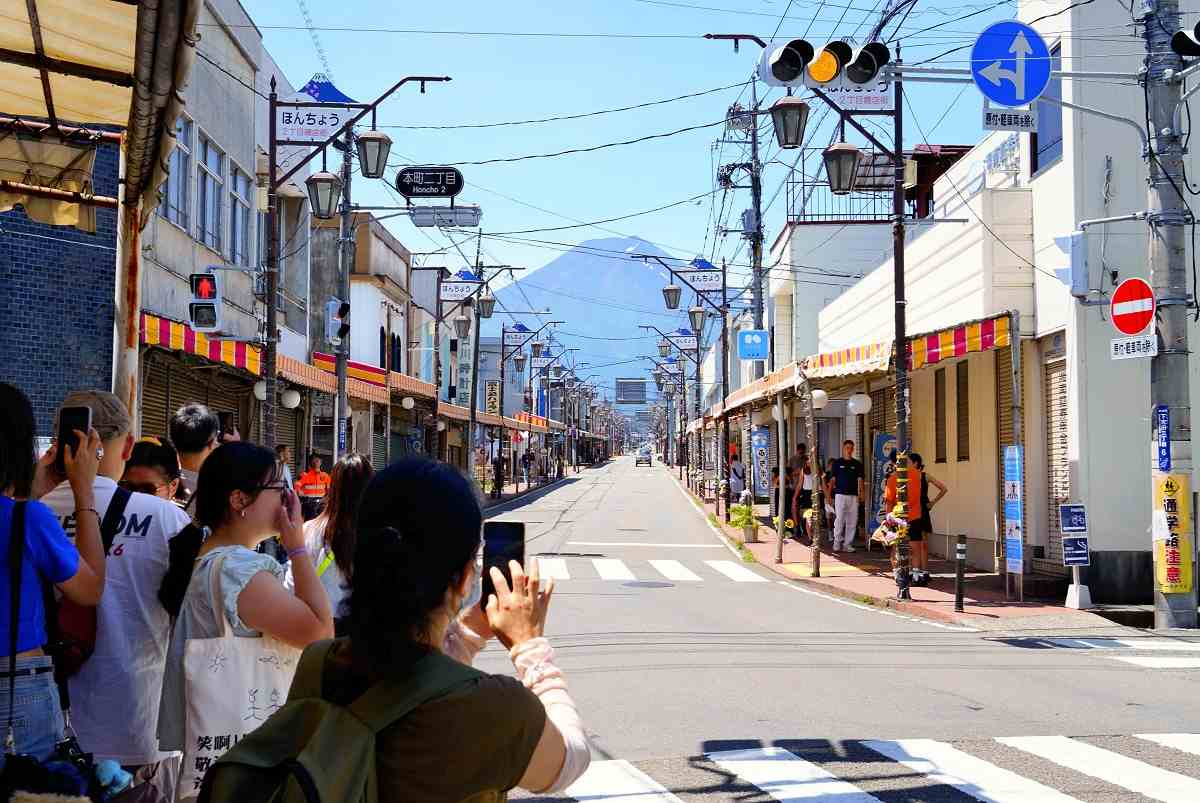
Many foreign tourists visit Honcho-dori shopping street in Fujiyoshida, Yamanashi Prefecture, in July.
13:54 JST, September 22, 2024
FUJIYOSHIDA, Yamanashi — A local government in Yamanashi Prefecture has launched a new subsidy system to revitalize an abandoning shopping district, taking advantage of the influx of foreign tourists who are flocking to the area to enjoy beautiful views of Mt. Fuji.
The Honcho-dori shopping street in the central part of Fujiyoshida in the prefecture has become full of vacant store spaces, but in the same time, large numbers of foreign tourists have visited this spot in to see spectacular Mt. Fuji.
The city government has established a system to offer subsidies to those who want to open stores or eateries in the shopping street, in hopes of using the scenery’s attractiveness to foreign tourists to revitalize the area.
Under the new system, nearly 20 new stores, including restaurants and souvenir shops, are preparing to open in the Honcho-dori shopping street in the central part of Fujiyoshida in the prefecture. The city government aims to develop the shopping street into a nucleus of tourism-related industries in the city.
Honcho-dori is also known as Fuji-michi, or Fuji road, as the street appears to extend straight on to Mt. Fuji. Until the mid-1960s, the area was a bustling commercial district, which even had a movie theater. But the area was gradually hollowed out. Currently, the area is lined with more than 100 empty houses and closed stores.
For recent several years, however, the shopping street has been a social media phenomenon as people say they can take great photos there –- retro items that give the atmosphere of half century ago, such as old signboards and chochin lanterns, with Mt. Fuji in the background.
Recently, the street has begun to see visitor numbers exceeding 4,000 a day. The city government has begun revitalizing the shopping street full of closed store spaces by utilizing the large numbers of tourists, especially foreigners, to develop the local community.
In June last year, a company was established to promote the revitalization of the local community. In October last year, the city government began a scheme to offer subsidies of up to ¥5 million to business entities and individuals who want to begin new businesses in closed shops on or around the shopping street.
So far a total of 19 subsidy applications have been submitted, of which 18 are expected to be approved. There are plans for a wide variety of businesses, including restaurants, guesthouses, souvenir shops and experiential workshops, with all scheduled to open in sequence.
Kazuki Horiuchi, 45, used a subsidy to start a restaurant that will open as early as October and serve char-grilled food. He purchased a two-story building, which had previously served as both a home electronics store and the home of that store’s owner, and spent half a year refurbishing it. He plans to run a restaurant where customers will enjoy yakitori grilled chicken and nikomi boiled dishes in a retro atmosphere.
“I want to run a restaurant which will remain in the memories of visitors both from home and abroad,” Horiuchi said.
One of the questions involved in revitalizing the area is how to avoid spoiling the retro atmosphere that attracted so many tourists in the first place.
The promoting company is also providing subsidies for projects to preserve the exteriors of existing buildings as well as beginning attempts to connect owners of vacant store spaces with people who want to open new businesses there.
Kinichi Mizukoshi, the company official in charge of the project, said, “We want to maintain the scenery which fascinates so many people for as long as possible and make the area a place that offers excellent hospitality.”
Related Tags
"Features" POPULAR ARTICLE
-

Students Recreate 19th-Century Bento Boxes Made for Ino Tadataka’s Survey Team in Hot Spring Town on Nakasendo Road
-

Santa Claus Delivers Christmas Presents to Penguins at Aquarium in Japan’s Nagasaki Prefecture
-
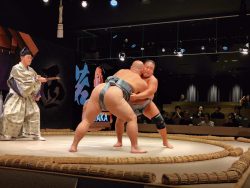
Sumo Restaurant in Tokyo Teaches Foreign Visitors About the Ancient Sport, with Bouts Between Retired Rikishi
-

Autonomous Passenger Ship Connects Mainland with Remote Island in Seto Inland Sea; World’s 1st Commercially Operated Autonomous Vessel
-

Japanese Chef of Italian Restaurant in Tokyo Offers Milanese Risotto; Bright Colors, Rich Flavors in Simple Steps
JN ACCESS RANKING
-

BOJ Gov. Ueda: Highly Likely Mechanism for Rising Wages, Prices Will Be Maintained
-

Japan Govt Adopts Measures to Curb Mega Solar Power Plant Projects Amid Environmental Concerns
-

Core Inflation in Tokyo Slows in December but Stays above BOJ Target
-

Major Japan Firms’ Average Winter Bonus Tops ¥1 Mil.
-

Bank of Japan Considered U.S. Tariffs, Coming Shunto Wage Hike Talks in Its Decision to Raise Interest Rates


